研究领域:
地球上海洋接近90%的面积是水深超过1000米的深海,黑暗、高压、低温和寡营养的环境造就了其独特的生态系统。微生物是深海生态系统中的最重要的组成部分。研究深海嗜压微生物的极端环境生存策略将加深对生命适应极端环境的认识和理解,有利于探索生命的起源及生命的演化等理论问题。同时,深海微生物在适应环境的过程中,进化出独特的代谢途径并产生特殊的代谢产物,具有潜在的应用价值,是基础科学研究与现代生物医学共同关注的焦点。
趋磁细菌是一类能沿磁力线运动的原核生物总称。它们能够高效吸收环境中的铁,通过生物矿化过程在胞内囊泡结构中合成纳米磁性颗粒,使其在磁场中排列并沿磁力线游动。趋磁细菌研究在研究生物矿化机制、生物地磁响应机理、沉积剩磁、古环境重建、真核生物细胞内膜器官起源等科学问题,探索地球早期或地外生命遗迹,开展新型生物源纳米磁性材料的工业应用等领域均有重要科学意义。在自然界中,趋磁细菌广泛分布于潮间带、近岸海域、河流、湖泊、红树林等多种水生环境中。科学家也曾在深海(南大西洋3000米水深处)沉积物中发现活的趋磁细菌。近期,我国科研人员(中法联合实验室肖天课题组)首次在5000米水深的东太平洋沉积物中检出源于趋磁细菌的核酸片段和生物源纳米磁性颗粒。深层水体中趋磁细菌的种类与分布,以及它们的压力生存极限如何?高压会影响细胞膜结构、物质转运等多种生命过程,磁小体的合成及生物矿化过程是如何适应高压环境的?这些都是迫切需要回答的问题。
本课题组主要关注深海生物圈的生命现象,以细胞结构、物质能量代谢以及细胞内生物矿化为表征,综合利用基因组学、分子生物学、生物化学等研究方法,结合显微观测、微流体技术,研究微生物对深海低温高压的极端环境的适应机制。主要研究方向为:1) 不同深度的海洋环境中趋磁细菌的组成及群落分布特征; 2) 探索生物膜功能以及细菌运动行为对压力的适应性的研究。
研究团队:
张维佳,博士,副研究员,硕士生导师;
电子邮箱:wzhang@sidsse.ac.cn
张圣妲,博士,助理研究员;
电子邮箱:sdzhang@sidsse.ac.cn
李学恭,博士,助理研究员;
电子邮箱:xuegongli@sidsse.ac.cn
陈海涛,硕士,研究助理;
电子邮箱:haitaochen@sidsse.ac.cn
尹群健,博士研究生,在读;
电子邮箱:yinyin2026@sidsse.ac.cn
张婵,硕士研究生,在读。
主要承担课题:
2016/01-2018/12 国家自然科学基金,深渊严格嗜压菌 Moritella yayanosii DB21MT-5鞭毛系统适应高压环境的机制研究
2014/11-2015/11 三亚市院地科技合作项目,海南海域趋磁细菌的生物多样性和矿化研究
2014/01-2018/12中国科学院战略性先导科技专项(B类),深海微生物适应机制和工程菌研究
2013/09-2016/09中国科学院知识创新工程领域前沿,深渊微生物能量代谢及生物矿化过程
研究进展:
课题组对海南省三亚市红树林河口水域潮间带沉积物中的趋磁细菌丰度、形态和多样性进行了分析。透射电子显微镜、选区衍射及X射线能谱分析结果表明,该区域中趋磁细菌细胞形态多样。单细胞趋磁细菌中主要以立方八面体和子弹头状的磁铁矿磁小体为主,一些趋磁大杆菌中有不规则形状的胶黄铁矿磁小体。多细胞趋磁细菌中可观察到不规则形状的磁铁矿磁小体,一些细胞中可同时观察到子弹头状胶黄铁矿磁小体。通过构建16S rRNA基因克隆文库共获得33条趋磁细菌序列,分别属于α-变形菌纲、δ-变形菌纲和γ形变形菌纲的21个OTU。
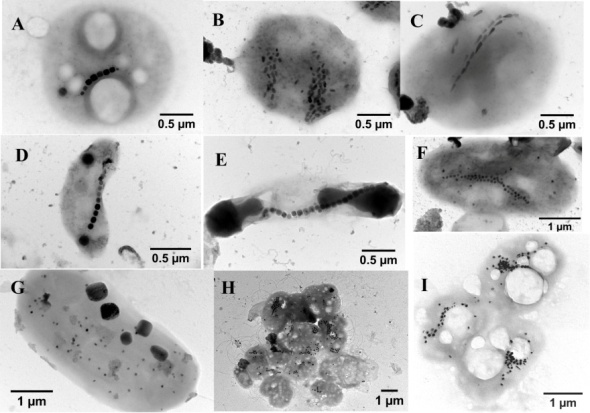
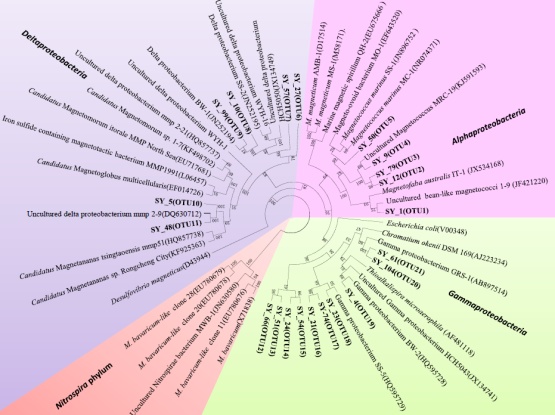
三亚河红树林趋磁细菌 三亚河红树林趋磁细菌的16S rRNA基因系统发育树
为克服深海环境样品难以收集的瓶颈问题,课题组与本所深海资源开发研究室合作,设计组装了一套趋磁细菌富集装置。浅海的水下测试证实该设备可以实现对趋磁细菌的富集,后续将进行进一步的优化,在提高采集效率的同时改进设备的便携性及防水性,以满足深海环境中趋磁细菌富集的需求。

实验室高压模拟培养及分析设备:
为研究深海这一特殊环境中微生物的各项生命过程,课题组搭建了一系列高压模拟培养和分析设备。高压模拟细胞培养装置(左图):该装置可模拟相当于0-15000米水深处的压力条件,配合适当的控温设备,可用于全海深样品的微生物培养,为研究深海微生物的生理代谢特征及压力适应机制提供技术保障。高压模拟光学分析仓(右上图):该装置配合分光光度计使用,可进行最高达500MPa压力条件下的吸光值检测。高压模拟显微观察仓(右下图):该装置配合光学倒置显微镜使用,最高可耐受400MPa压力,可用于高压条件下观察细胞形态,细胞运动特征分析。
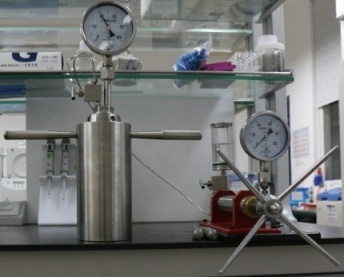
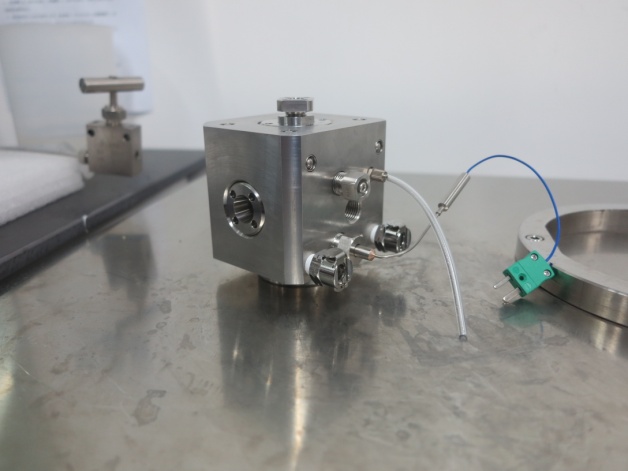
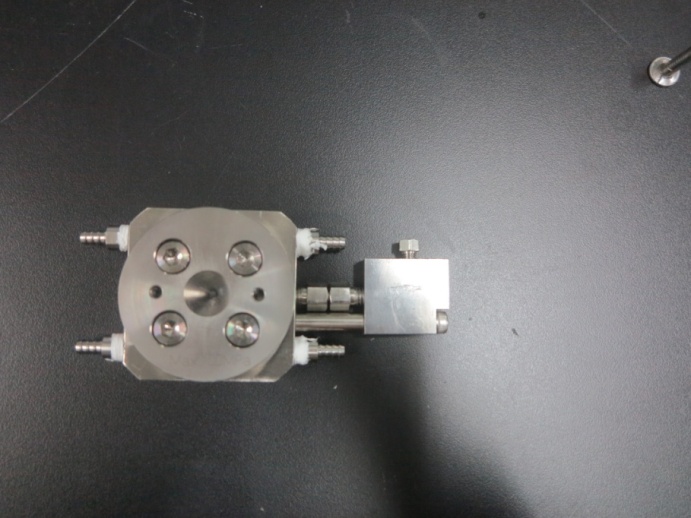
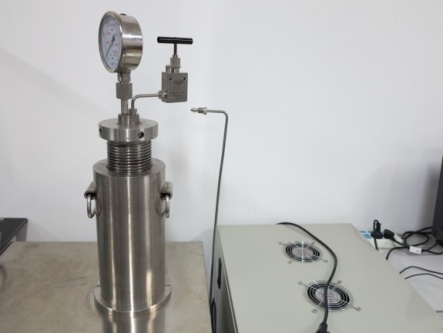
实验室高压培养分析设备
近5年代表性文章:
1. Li XG, Fu L, Li Z, Ma X, Xiao X, Xu J: Genetic tools for the piezophilic hyperthermophilic archaeon Pyrococcus yayanosii. Extremophiles 2015, 19(1):59-67.
2. Li XG, Zhang Y and Xiao X: Ecology and Genetics of Deep-seaThermophiles. In Fuli Li (Ed.), Thermophilic Microorganisms, (1-11): Caister Academic Press.
3. Chen Z, Wang J, Bao L, Guo L, Zhang W-J, Xue Y, Zhou HL, Xiao Y, Wang JW, Wu F et al: Human monoclonal antibodies targeting the haemagglutinin glycoprotein can neutralize H7N9 influenza virus. Nature Communications 2015, 6.
4. Xu FD, Li XG, Xiao X, Xu J: Kangiella profundi sp. nov., isolated from a deep-sea sediment. Int J Syst Evol Microbiol 2015.
5. Zhang Y, Li XG, Bartlett DH, Xiao X: Current developments in marine microbiology: high-pressure biotechnology and the genetic engineering of piezophiles. Current opinion in biotechnology 2015, 33:157-164.
6. Fu L, Li XG, Xiao X, Xu J: Purification and characterization of a thermostable aliphatic amidase from the hyperthermophilic archaeon Pyrococcus yayanosii CH1. Extremophiles 2014, 18(2):429-440.
7. Ji B, Zhang S-D, Arnoux P, Rouy Z, Alberto F, Philippe N, Murat D, Zhang W-J, Rioux JB, Ginet N et al: Comparative genomic analysis provides insights into the evolution and niche adaptation of marine Magnetospira sp. QH-2 strain. Environ Microbiol 2014, 16(2):525-544.
8. Liu L, Zhang W-J, Zheng J, Fu H, Chen Q, Zhang Z, Chen X, Zhou B, Feng L, Liu H et al: Exploration of novel cellular and serological antigen biomarkers in the ORFeome of Mycobacterium tuberculosis. Molecular & cellular proteomics : MCP 2014, 13(3):897-906.
9. Wang X, Wang Q, Zhang W-J, Wang YJ, Li L, Wen T, Zhang TW, Zhang Y, Xu J, Hu J et al: Complete Genome Sequence of Magnetospirillum gryphiswaldense MSR-1. Genome announcements 2014, 2(2).
10. Zhang S-D, Barbe V, Garel M, Zhang W-J, Chen H, Santini CL, Murat D, Jing H, Zhao Y, Lajus A et al: Genome Sequence of Luminous Piezophile Photobacterium phosphoreum ANT-2200. Genome announcements 2014, 2(2).
11. Zhang S-D, Petersen N, Zhang W-J, Cargou S, Ruan J, Murat D, Santini CL, Song T, Kato T, Notareschi P: Swimming behaviour and magnetotaxis function of the marine bacterium strain MO-1. Environmental Microbiology Reports 2014.
12. Zhang W-J, Li Y, Wu L-F: Complex composition and exquisite architecture of bacterial flagellar propellers. Chinese Science Bulletin 2014, 59(20):1912-1918.
13. Li XG, Tang XM, Xiao J, Ma GH, Xu L, Xie SJ, Xu MJ, Xiao X, Xu J: Harnessing the potential of halogenated natural product biosynthesis by mangrove-derived actinomycetes. Marine drugs 2013, 11(10):3875-3890.
14. Siponen MI, Legrand P, Widdrat M, Jones SR, Zhang W-J, Chang MC, Faivre D, Arnoux P, Pignol D: Structural insight into magnetochrome-mediated magnetite biomineralization. Nature 2013, 502(7473):681-684.
15. Wang Q, Liu JX, Zhang W-J, Zhang TW, Yang J, Li Y: Expression patterns of key iron and oxygen metabolism genes during magnetosome formation in Magnetospirillum gryphiswaldense MSR-1. FEMS Microbiol Lett 2013, 347(2):163-172.
16. You ZY, Wang YH, Zhang ZG, Xu MJ, Xie SJ, Han TS, Feng L, Li XG, Xu J: Identification of two novel anti-fibrotic benzopyran compounds produced by engineered strains derived from Streptomyces xiamenensis M1-94P that originated from deep-sea sediments. Marine drugs 2013, 11(10):4035-4049.
17. Ruan J, Kato T, Santini CL, Miyata T, Kawamoto A, Zhang WJ, Bernadac A, Wu LF, Namba K: Architecture of a flagellar apparatus in the fast-swimming magnetotactic bacterium MO-1. Proc Natl Acad Sci U S A 2012, 109(50):20643-20648.
18. Zhang W-J, Santini CL, Bernadac A, Ruan J, Zhang S-D, Kato T, Li Y, Namba K, Wu LF: Complex spatial organization and flagellin composition of flagellar propeller from marine magnetotactic ovoid strain MO-1. J Mol Biol 2012, 416(4):558-570.
19. Zhou K, Zhang W-Y, Kui Y-Z, Pan H-M, Zhang S-D, Zhang W-J, Yue H-D, Li Y, Xiao T, Wu L-F: A novel genus of multicellular magnetotactic prokaryotes from the Yellow Sea. Environmental Microbiology 2012, 14(2):405-413.
20. Zhou K, Pan H-M, Zhang S-D, Yue H, Xiao T, Wu L-F: Occurrence and microscopic analyses of multicellular magnetotactic prokaryotes from coastal sediments in the Yellow Sea. Chinese Journal of Oceanology and Limnology 2011, 29(2):246-251.
21. Lefevre CT, Santini CL, Bernadac A, Zhang W-J, Li Y, Wu L-F: Calcium ion-mediated assembly and function of glycosylated flagellar sheath of marine magnetotactic bacterium. Mol Microbiol 2010, 78(5):1304-1312.
22. Zhang W-J, Chen C, Li Y, Song T, Wu L-F: Configuration of redox gradient determines magnetotactic polarity of the marine bacteria MO-1. Environmental Microbiology Reports 2010, 2(5):646-650.
23. Zhu KL, Pan H-M, Li JH, Yu-Zhang K, Zhang S-D, Zhang W-Y, Zhou K, Yue HD, Pan YX, Xiao T et al: Isolation and characterization of a marine magnetotactic spirillum axenic culture QH-2 from an intertidal zone of the China Sea. Rev Microbiol 2010, 161(4):276-283.

 中科院三亚深海科学与工程研究所
中科院三亚深海科学与工程研究所







